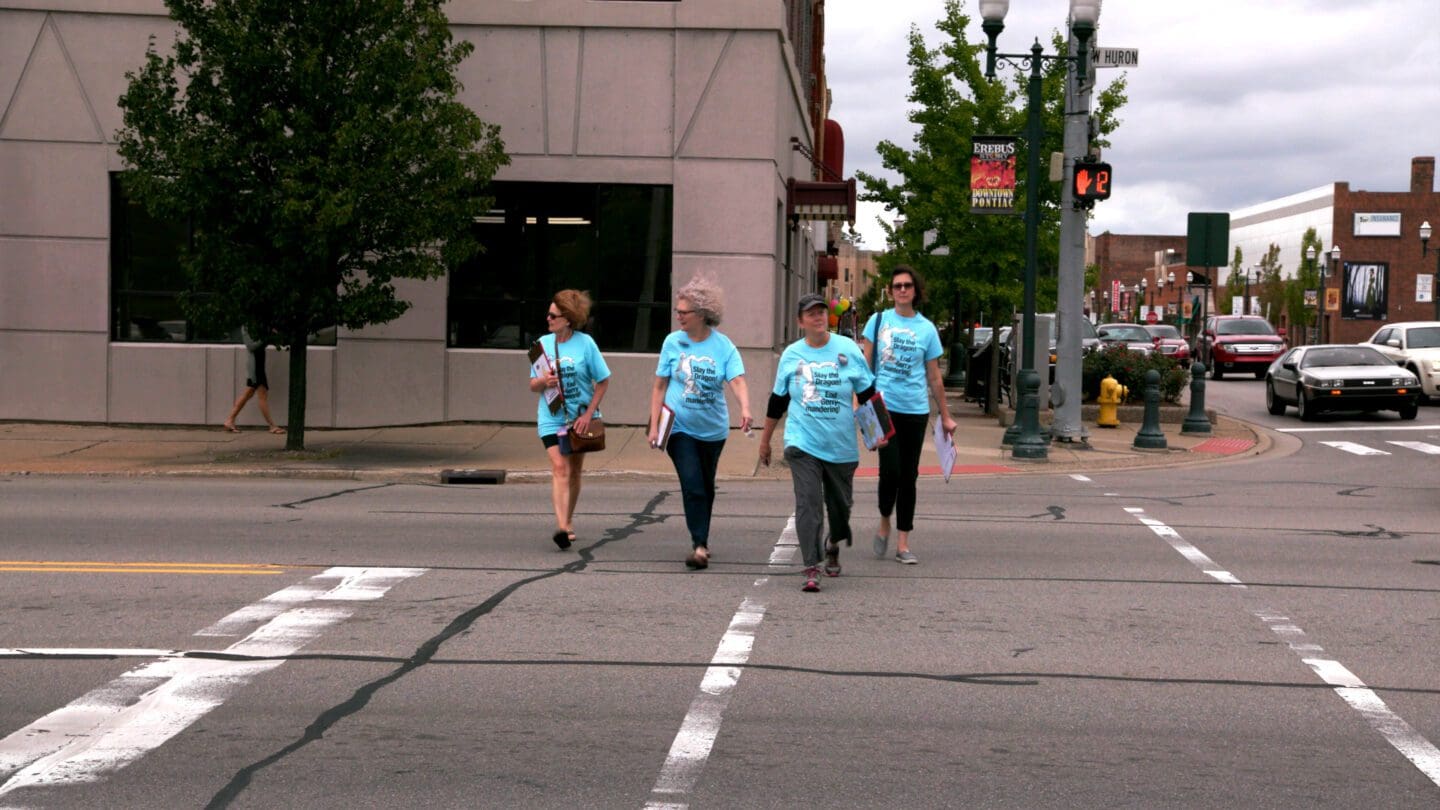Slay the Dragon
After the 2008 election, a secretive, well-funded partisan initiative poured money into state legislative races in key swing states to gain control of their redistricting processes and used high-tech analytics to dramatically skew voting maps based on demographic data. The result is one of the greatest electoral manipulations in U.S. history, one that poses a fundamental threat to our democracy and exacerbates the already polarized atmosphere in Congress and state houses across the country.
Gerrymandering, the practice of redrawing electoral maps to serve the party in power, has been around for centuries. But in today’s hyper-partisan political environment it has been taken to unprecedented extremes, fueled by the elimination of corporate campaign contribution limits and the availability and targeted manipulation of vast amounts of personal information to achieve political power.
Voters, fed up with cynical efforts to sidestep the will of the majority, have begun fighting back. A grassroots movement led by a young woman with no prior political experience gathered hundreds of thousands of signatures to put an anti-gerrymandering initiative on the ballot in Michigan.
Slay the Dragon shines a light on this timely issue, and follows a handful of citizens’ groups, outraged by what they see as an attack on the core democratic principle that every person’s vote should count equally, as they battle party operatives and an entrenched political establishment to fix a broken system.
What is gerrymandering?
Every 10 years, after U.S. census data is collected, states are legally mandated to redraw their electoral districts. This system was created to ensure that each district is equal in population size so that citizens are represented equitably – one person, one vote. But politicians often redraw districts in ways that benefit themselves, drawing boundaries that group same-party votes into districts that ‘can’t be lost’. When one party disproportionately benefits by how a district map is drawn, it’s known as gerrymandering.
What is this film about?
Hailed a “moral game-changer” and “the most important political film of the year”, Slay the Dragon shines a light on this timely and critical issue of gerrymandering. The film follows a handful of citizens’ groups in Michigan and Wisconsin, outraged by what they see as an attack on the core democratic principle that every person’s vote should count equally, as they battle party operatives and an entrenched political establishment to fix a broken system.
Through the commitment and bravery of the advocates in the film – Katie Fahey, who formed Voters Not Politicians in Michigan; and the Wisconsin legal team that took the gerrymandering case to the Supreme Court last year – Slay the Dragon shows us that, living inside each one of us, is a dragon slayer ready to take back our democracy.
How does gerrymandering impact my state?
Every ten years, states redraw district lines to ensure districts appropriately reflect their electorate. These lines have consequential bearing on political power, both locally and at the federal level, and largely determine which political issues take precedence and which communities are, or aren’t, represented. When political parties redraw the lines to fit their political interests, or gerrymander, local communities are deprived of meaningful representation, laws that are supported by the majority of voters might not get passed and elections can repeatedly be swayed toward one party.
